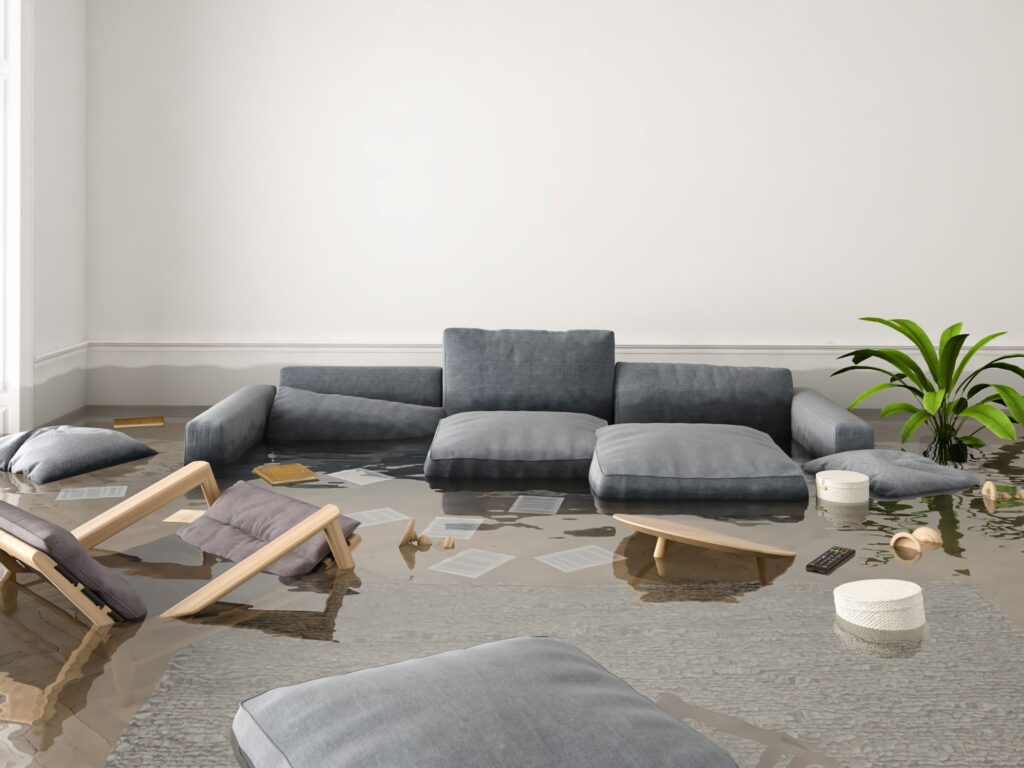Water damage is among the worst nightmares that most homeowners try to avoid. Whether the flood is due to a burst pipe, a faulty appliance, a storm, or a more severe issue like a flooded basement, the damage can be extensive and costly. When left unchecked and unresolved, it can lead to problems like mold growth, safety hazards, and structural damage that can worsen over time.

The key to dealing with water damage is to act fast and address the issue as soon as possible. This article will cover some tips on how to deal with water damage after a flood to help you get your home back to its original state and prevent future issues from arising.
- Assess The Damage
First, you need to identify the type of water damage and its source. Doing so helps you evaluate the amount of damage done to your home and determine the most effective and safe way to clean it up. Start by identifying the source(s) of water penetration into the property so that you can report them to the professionals who know best how to deal with such damage.
Remember to also check the walls, floors, furniture, and other items for water damage. You may notice some discoloration on surfaces or even mold growing in spots with excessive moisture from flooding or leaks in pipes or appliances. If you find any signs of mold growth in your home after a flood, contact an expert immediately at www.waterdamagespecialist.com.au or other water damage specialist companies, as this type of contamination can be dangerous if left untreated.
- Protect Yourself And Your Valuables
Water is potentially dangerous for you and your family, especially when it comes into contact with electricity. So, before removing water or salvaging your appliances and valuables, turn off the main electrical power first to avoid potential hazards. However, if turning off the power requires you to stand or enter wet areas, it may be best to leave it alone and call an electrician.
Once the power has been turned off, wear protective clothing, including rubber boots and gloves, to protect yourself from injuries while removing your appliances, furniture, and other valuable items. Lastly, don’t forget to take pictures and document the water damage before starting the removal process. This will help you with any future insurance claims you make.
- Remove Standing Water
Standing water is a significant concern when dealing with water damage after a flood. It provides a breeding ground for harmful bacteria and fungi, leading to serious health problems. Standing water can also cause structural damage to a home, including warping, cracking, and rotting of wood and drywall.
Thus, removing standing water as quickly as possible is recommended to minimize the risk of further damage and ensure the restoration process is successful and efficient. You may use a wet-dry vacuum to remove standing water or a simple mop-and-bucket if the flood has only affected a small part of the house.
However, if the standing water has accumulated almost the entire house, it’s best to leave the water extraction to the professionals. They can use industrial vacuums and submersible pumps to eliminate the water from walls and floors as soon as possible. Then, once all standing water is removed, you may continue extracting the surface water through portable wet-dry vacuums.
- Begin Drying Out The Area
Once all signs of standing water have been successfully extracted, you may begin drying out the area. Drying out the affected area is crucial to prevent mold growth and limit the spread of damage.
You may use dehumidifiers and air movers to pull moisture from the air and help to speed up the drying process. You can also use fans to circulate air throughout your home to help dry out wet areas faster.
- Clean, Sanitize, And Disinfect The Area
To further minimize the water damage and prevent mold growth in your home, you may start cleaning and sanitizing the area. But before you start cleaning, wear protective gear to protect yourself from potential health hazards.
Then, remove any damaged materials, such as drywall, insulation, and carpet. These materials can harbor mold and bacteria and should be removed and disposed of properly. Clean the surfaces thoroughly, then disinfect them with a bleach solution, following the manufacturer’s instructions, to kill bacteria.
After cleaning and disinfecting, dry out the affected area thoroughly. However, if the flood has caused massive damage to your home, seek the help of a professional restoration company to help speed up the cleanup and restoration process.
- Take The Necessary Precautions To Prevent Water Damage In The Future
Ultimately, the best way to deal with water damage is to take precautions. Here are tips to avoid water damage in the future:
- Regular plumbing maintenance
Regular maintenance of your home’s plumbing and roof can help avert water damage. Have a plumber inspect your pipes, faucets, and water heaters regularly. Also, have a professional inspect your roof for any damage or leaks.
- Install water detection devices
Installing water detection devices can help detect leaks and prevent water damage. These devices allow you to take necessary action before the damage becomes severe.
- Clean gutters and downspouts
Keeping your gutters and downspouts clean can prevent water from backing up and destroying your roof and walls. So, ensure they’re free from debris and clogs, especially during the rainy season.
- Proper landscaping
Ensure your yard is properly landscaped to prevent water from pooling near your home’s foundation. Proper landscaping can help water drain away from your home’s foundation, preventing water damage.
These tips can help prevent water damage and guarantee the safety of your home and belongings.
The Bottom Line
Dealing with water damage after a flood can be challenging. But with these steps, you can minimize the damage caused by water and ensure the safety of your home, family, and valuables.